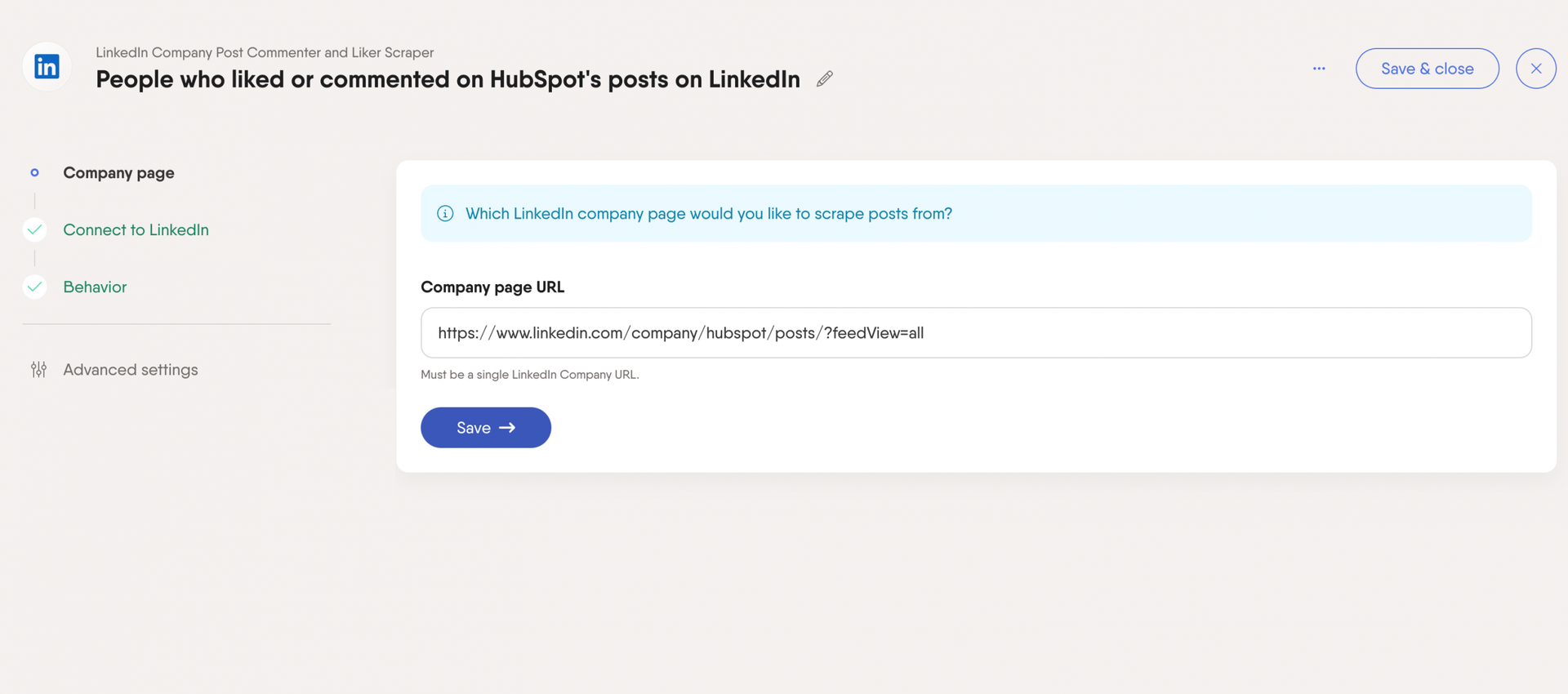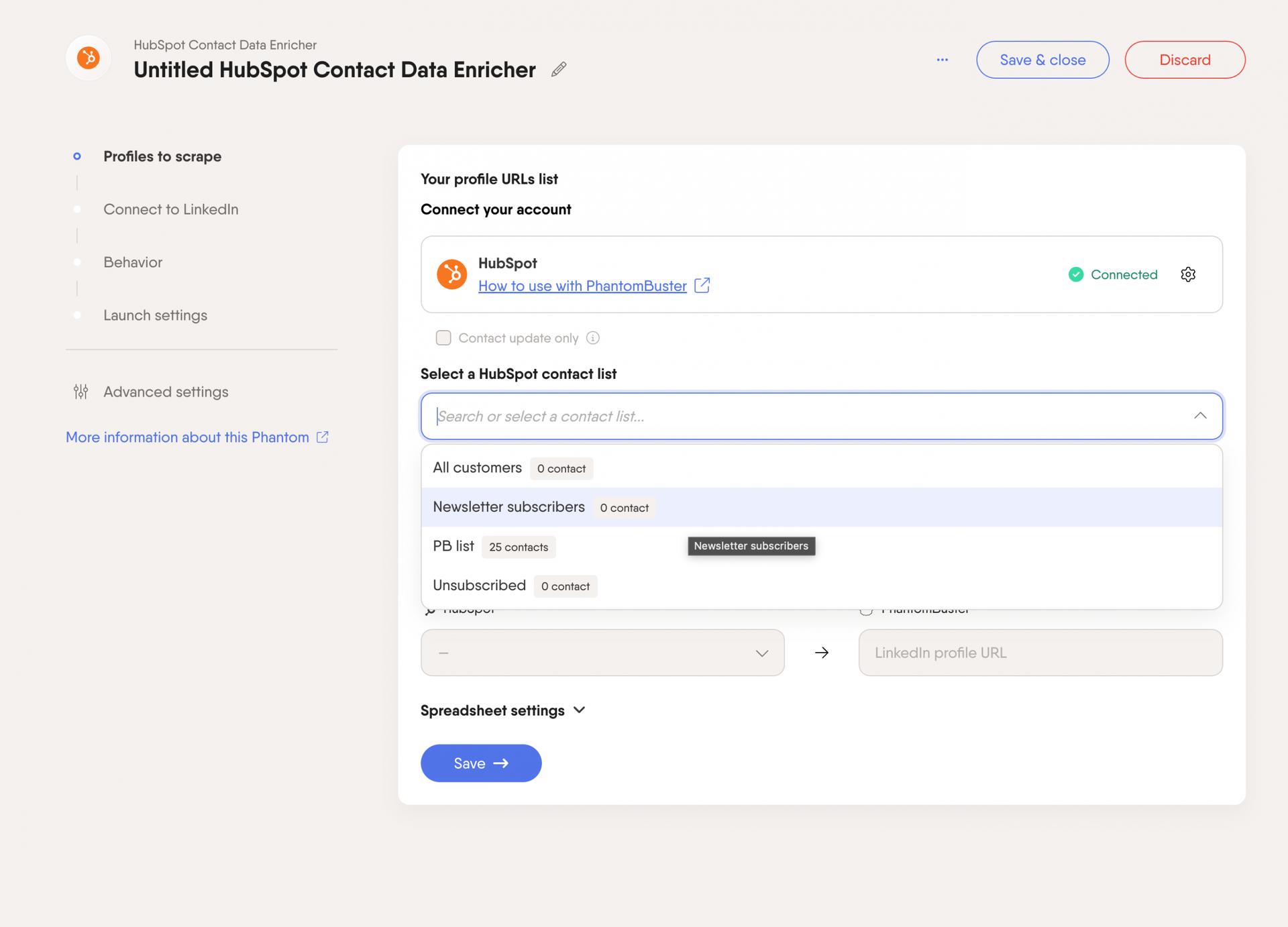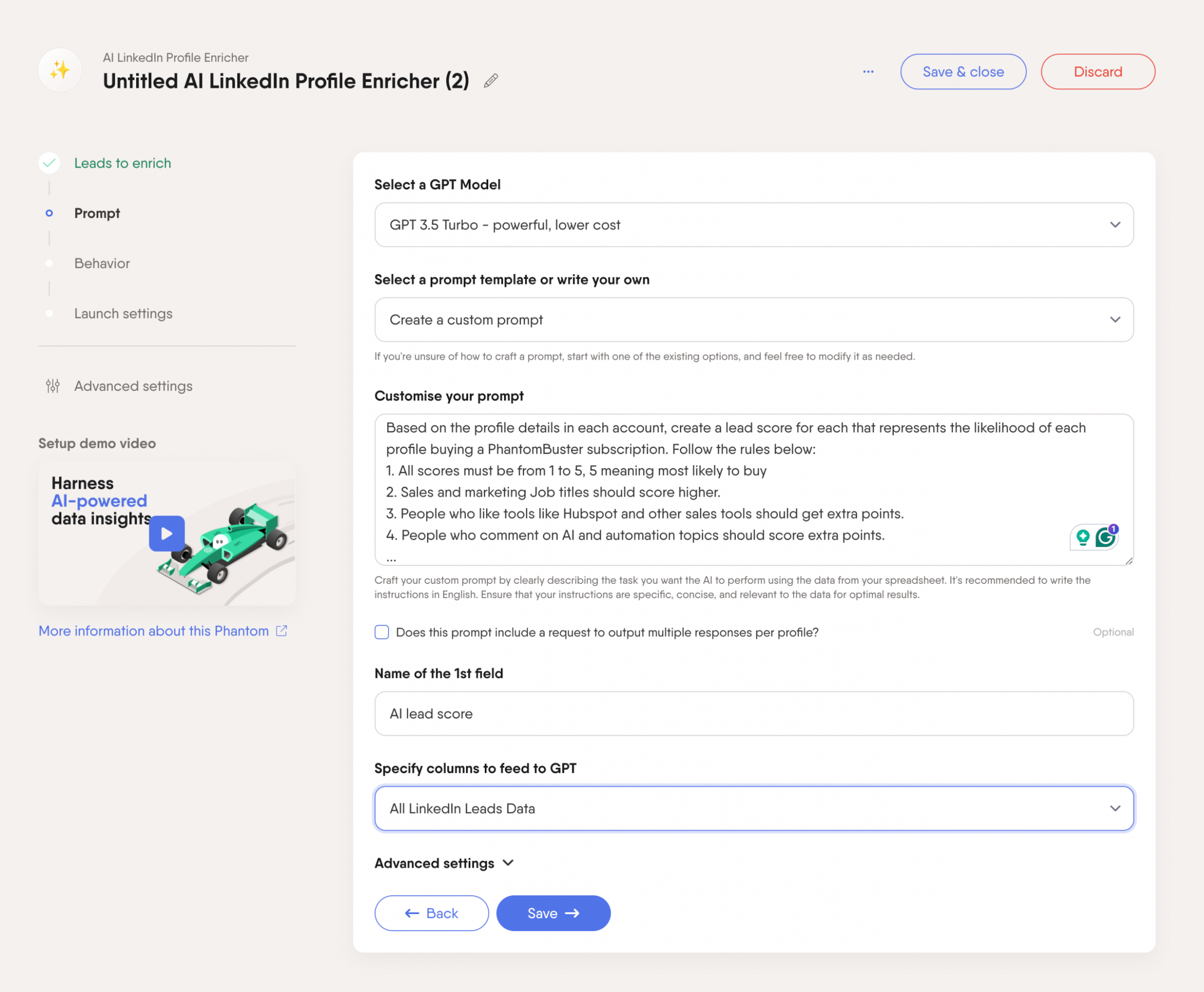Are your lead lists full of outdated, incomplete, or duplicate data? Dirty data can seriously slow down your sales and marketing efforts.
If you’re tired of wasting time on leads that don’t convert, cleaning up your CRM is key.
To improve data quality, we’ll cover practical steps for cleaning dirty data from your CRM, including using lead enrichment tools with fresh, reliable data sources and scraping intent data.
TL;DR
- Dirty data refers to incomplete, duplicate, or inaccurate data in your CRM that can waste time, cause mistakes, and lead to missed opportunities.
- Incorrect data can take many forms, from duplicate or outdated information to inaccurate, incomplete, inconsistent, or non-compliant data.
- To keep dirty data out of your CRM, start by scraping fresh, reliable data and enriching it to fill any gaps. Focus on adding valuable leads who show intent signals, such as engaging with competitor posts.
- Then, use data enrichment tools and AI sales tools to fill in missing data, enrich your lists, keep them updated, and continuously monitor customer data such as job changes.
- Manage your sales pipeline by regularly auditing data, deleting leads that aren’t relevant or aren’t showing any interest, and defining data hygiene guidelines.
What is dirty data?
Dirty data is simply bad information in your CRM. It could be incorrect phone numbers, duplicate records, or missing fields.
This kind of data makes it harder to reach prospects, track progress, or run effective campaigns. In the long run, dirty data can lead to mistakes, hinder data analysis, and waste time and opportunities.
Keeping your prospecting list clean ensures you have reliable information that helps your business run smoothly.
Types of dirty data
| Type of dirty data | Definition |
| Duplicate data | Same info entered multiple times in different ways. |
| Outdated data | Information that’s no longer accurate, like an old email or address. |
| Inaccurate data | Errors in your data, such as typos or wrong details. |
| Incomplete data | Missing important info that leaves gaps in your records. |
| Inconsistent data | Conflicting data stored in different formats or places. |
| Non-compliant data | Data that doesn’t follow privacy laws like GDPR or CCPA. |
When it comes to your CRM, poor data quality—often caused by human error—can mess up everything from your email campaigns to sales outreach.
Let’s break down the common types of dirty data you’ll want to watch out for:
Duplicate data
Duplicate data enters into your CRM when the same information gets added more than once, often because of small typos or variations.
For example, “John Doe” and “Jon Doe” might be listed as two different people, but they’re actually the same lead. These duplicates can make your metrics unreliable and lead to wasted outreach.
Every time you think you’re contacting a new lead, you might just be reaching out to the same person again, which can look unprofessional, create a negative brand image and waste your team’s time.
Outdated data
Outdated data happens when contact details like phone numbers, job titles, or email addresses are no longer valid. Maybe you’re reaching out to someone who’s switched companies or is no longer using the same email.
This type of dirty data often leads to dead ends, with emails bouncing back or phone calls not connecting.
Worse yet, you might be missing opportunities because you’re targeting the wrong person for the job.
Inaccurate data
Inaccurate data is when something’s just plain wrong—whether it’s a typo in an email address or a phone number entered incorrectly.
Small errors like these can lead to big headaches down the line, like emails bouncing back or calls going to the wrong person.
Nobody wants to call a lead and realize halfway through that they’ve got the wrong number. It’s frustrating and time-consuming.
Incomplete data
When key details are missing, like the company name or the job title, your CRM becomes less effective. You can’t properly target prospects or personalize outreach without these important pieces of information.
You might have a name and email, but no phone number or company info. Without the full picture, it’s harder to reach out or segment your audience effectively.
This leads to missed opportunities and inefficient processes, as you’re often left guessing about the right approach.
Inconsistent data
Inconsistent data happens when information isn’t stored the same way across your systems.
This kind of dirty data can create serious confusion. Even small differences in formatting—like how dates or names are entered—can cause significant issues when analyzing or merging records.
For example, if one system stores customer birth dates as “MM/DD/YYYY” and another as “YYYY-MM-DD,” it can cause mismatches and errors in reporting.
Plus, if one platform uses a different structure than another, your data might not sync correctly, causing even more headaches.
Non-compliant data
Non-compliant data isn’t just a minor issue—it poses a real risk for your entire business. This is when data doesn’t meet privacy standards like GDPR or CCPA.
It could be because it’s not encrypted or because the right consent wasn’t obtained. Not only does this put you at risk of fines, but it also results in damaged customer relationships.
How to clean dirty data from your CRM
Keeping your CRM free from dirty data might sound like a big task, but it doesn’t have to be complicated. And it’s essential for your pipeline generation strategy.
The key is focusing on strategies that prioritize quality over quantity when it comes to your leads.
Scrape fresh data instead of buying lead lists
I’ll start by saying that having clean data from the beginning means less cleaning up later!
A lot of businesses fall into the trap of buying lead lists, thinking it’s the fastest way to fill their pipeline. But often, those lists are filled with dirty data, that are outdated, irrelevant, or both.
Instead of spending money on questionable leads, try scraping fresh data directly from sources like LinkedIn. It’s a more reliable way to ensure you’re only working with high-quality, up-to-date information.
LinkedIn is especially useful for this because people are constantly updating their profiles with new roles, companies, and industries.
For example, using a tool like PhantomBuster lets you automate data scraping by gathering all the available data from LinkedIn profiles.
Add data based on intent signals
Intent signals are actions that show a prospect is actively interested in what you offer — like when they engage with your competitor’s posts or attend industry-related events.
Instead of just downloading a massive list of prospects, it’s way more effective to focus on building lists based on data that relies on intent signals.
For example, if someone comments or likes a post from one of your competitors, they’re likely exploring solutions similar to yours.
That’s a great opportunity to target them since they’re already looking for something you can provide.
You can use PhantomBuster’s LinkedIn Company Post Commenter and Liker Scraper to monitor who is engaging with your competitors’ posts or other industry-related content.

Fill in existing data gaps in your lists with enrichment tools
With data enrichment tools like LinkedIn scrapers, you can get fresh and accurate data straight from LinkedIn in real time.
These data management tools help enrich your lead lists, filling in missing job titles, industries, or other key details, so your team always has up-to-date info for better targeting.
You might want to check out the HubSpot Contact Data Enricher Phantom, which can help you add LinkedIn profile details directly to your HubSpot contacts.

Bottom line: the more accurate and complete your data, the easier it’ll be to tailor your outreach and close more deals.
Continuously update lead lists
Monitoring changes in your contacts’ jobs is crucial to keeping your lead lists accurate and avoid dirty data.
For example, someone who recently changed jobs might no longer fit your ideal customer profile (ICP).
Staying up-to-date with job changes allows you to adjust your outreach and segmentation efforts.
For instance, if a key decision-maker at one of your target accounts moves to a new company, you can reach out to their replacement at the previous company while also pursuing opportunities with them at their new organization.
Tracking these job changes automatically with tools like HubSpot Contact Career Tracker helps you avoid wasting time on irrelevant leads.
![]()
Practice data purging regularly
Getting rid of dirty data is just as important as adding new leads to your CRM. It’s important to do regular data audits and delete leads that aren’t relevant or haven’t shown any interest.
Focus on leads that match your ideal customer profile (ICP), and remove the ones that don’t.
You can use AI sales tools like PhantomBuster’s AI LinkedIn Profile Enricher to enrich lead lists with scores based on the profiles details.
This type of prompt can show you the likelihood of each lead buying your solution.

You can score better with better data, and ongoing data management is easier. This way, your CRM stays lean and your team can focus on the leads that matter.
Use lead prospecting tools that integrate with your CRM
Keep things simple by using tools that feed directly into your CRM, so you don’t have to manually juggle data from spreadsheets or other systems.
PhantomBuster’s HubSpot Contact Sender is a great option for that. It helps you seamlessly pull in relevant leads without the hassle, keeping your contact lists organized and updated automatically.

This approach ensures your sales and marketing teams have all the right contacts, without wasting time on manual data entry.
Let the tools handle the heavy lifting, so you can focus on nurturing relationships with leads that are actually valuable to your business.
Define data quality guidelines
Set clear, actionable rules for collecting and managing your data. Make sure your team knows what “good data” looks like: it should be accurate, up-to-date, and relevant to your sales efforts.
To define data quality guidelines, start by setting specific rules for how data should be collected and what tools you’ll use to enrich it. Also, decide how often your data should be reviewed and updated to avoid outdated contacts.
For ongoing sales pipeline management, establish a regular process for auditing your CRM—maybe monthly or quarterly.
Finally, ensure everyone on your team knows the steps for data cleaning and enrichment, whether they’re using manual tools or automating the process with platforms like PhantomBuster.
Conclusion
Cleaning up dirty data doesn’t have to be overwhelming. By scraping fresh, relevant data, adding intent-based leads, and setting up solid data quality management, you can prevent dirty data and keep your CRM clean and effective.
Good data is the foundation of good sales — try PhantomBuster for free and make sure you’re building on solid ground.
